Creativity and Ritual - At the Center of it All, Mystery
At the center of it all is Mystery. And surrounding Mystery are rituals of all manner, conscious and unconscious.
At the center of it all is Mystery. And surrounding Mystery are rituals of all manner, conscious and unconscious.
One example of Mystery is well described by the Puritan writer John Flavel:
“It is a most astonishing mystery to see heaven and earth married together in one person; the dust of the ground, and an immortal spirit clasping each other with such dear embraces and tender love; such a noble and divine guest to take up its residence within the mean walls of flesh and blood.”
We human mysteries have rituals of morning, evening, prayer, fitness, creative, some sustaining, some undermining. We create rituals and rituals create us, consciously and unconsciously. Ritual is how we orient ourselves to the center, to meaning.
Ritual is a part of the word spiritual. We humans are spirit and ritual, embodied, alive. We have the breath of life within and give shape to that breath with our daily style of life.
We encounter traditions of ritual in all key moments of our lives such as birth, death, marriage and social and political events too. The meaningful parts of life are respected and recognized and remembered through ritual even though we don’t fully understand the mystery of life or death, or love or war.
“And so I will tell them one of the greatest, perhaps the greatest story of all—the story of good and evil, of strength and weakness, of love and hate, of beauty and ugliness. I shall try to demonstrate to them how these doubles are inseparable—how neither can exist without the other and how out of their groupings creativeness is born.”
— John Steinbeck
The natural world also is filled with ritual. Turning, rising, setting, growing, flowing, the natural world unfolds through rituals ordered and patterned yet chaotic and unpredictable, mysteriously. At the center of the world there is gravity, light, matter, dark matter, mystery.
We pattern our lives against these rites of nature, fearfully, overconfidently.
And the natural world has a frightening way of reminding us now and again of the mysterious forces that exist profoundly dangerously.
And we create new rituals all the time. To do so consciously, with purpose is a strength. To unmake and remake rituals as needed is also a strength.
Creativity is ritual in the face of the unknown.
We creatively solve problems.
We creatively describe solutions.
We creatively represent the meaningful, distilling the significant through story.
When aspects of the mystery are grasped, they are remembered through ritual. When aspects of the mystery are not grasped we lean on ritual to manage the distance between our knowledge and our faith.
Story is an ancient ritual, practiced by people around the flames for millenia. And we are all storytellers.
Science is ritual, seeking solutions to the challenges of the natural world with process and intuition and logic and trial and error.
Creative ritual is our life.
How we go about crafting our own personal rituals determines much of the shape of our life. To creatively craft our daily rites is to thoughtfully and purposefully become ourselves.
But the mystery remains at the center of everything and around the mystery we must remain humble.
We may bring intention and intensity to our practice (in fact we must), but not ego. Dedication, even ferocity, yes. But never arrogance. The space of the practice belongs to the goddess. We take our shoes off before we enter. We press our palms together and we bow.”
- Stephen Pressfield
With creative work, identifying and laying out for ourselves the rituals that support the creative act is a critical and delicate process.
Part of the magic of the great mystery is that elements of that mystery are revealed in moments of transcendence that may overwhelm our minds.
Looking into the eyes of a newborn child, knowing the love of another, witnessing natural events, gaining insights into astronomical patterns, receiving a smile, watching a sunset, noticing the color of leaves begin to turn.
These moments do not occur within us because we are great. The moments are great when we bear witness to the profound and receive the gift as offered with presence and attention and with gratitude. To practice observing carefully those moments of beauty and insight is a core ritual that makes space for the mystery to emerge.
With ritual we guide and focus our attentions and so make space for creativity to emerge.
“Don’t wait for inspiration. It comes while working." – Henri Matisse
Bringing into the light the rituals that make up our lives and work and exploring ways to consciously shape ritual is my goal here.
With photography, I’ve progressed in my craft and creative output by considering what rituals need to be adjusted, created anew and abandoned.
All of the pictures included throughout this piece represent moments where I was surprised at what the camera captured, where I learned something new was possible and the how. Sometimes inspired by another photographer, sometimes inspired by an interaction of light and subject these pictures are moments of delightfully creative flow.
It’s embarrassing to recall the number of potentially wonderful photos that don’t exist because of sloppy preparation. Forgetting a second battery, not checking focus, leaving the aperture wider than it should be, leaving my bag open too close to waves that might stretch up the beach…
Photography is my primary creative workshop and photography is a ritual that keeps me oriented towards the true and beautiful. I seek glimpses of beauty in the landscape I walk and observe hoping for an internal resonance with a scene. The ritual of photography is centered around the mystery of beauty and the capacity to represent that beauty as an image.
When the resonance arrives, I attend with my craft. Exposure, time, lens, perspective are chosen and worked with.
An early goal of my craft was to make the camera and lens disappear in the hand. With the technology as an extension of myself, able to be setup and used deftly and without much thought, I’m able to channel the beauty as best I can. This is an ongoing process of familiarity with the gear.
Like a musician in a jazz band, where music is dynamic and changing, responding well takes skill and attention and playfulness.
Many skills inform photography.
Focusing only on skills makes for a mechanic approach and result. Early on this may be good as skills with technology inform creative potential. It’s hard to conceive of a creative outcome without understanding the gear.
But to continue to grow artistically you can’t just push buttons.
The technique must become conscious so that it can become unconscious.
Beyond technique and craft there is awareness.
Observation and presence is the core skill.
You can’t respond to a dynamic environment without noticing, seeing and feeling the unique moments that quickly come and go.
Awareness may be practiced in most areas of life if we choose. Everything we do may become an exercise in presence and meditation and observation. There is an endless arena of exercise and progression. Many human rituals build these muscles.
Mindful walking; mindful breathing, mindful you name it. We live mindless robotic lives of the quietly desperate variety if we ignore the internal means of managing our attentions and affections.
So I craft rituals, practices, for my creative work. Optimizing these practices makes for improved creative process and outcome.
Check the bag before you drive off.
Take photos with the camera bag closed.
Double-check the settings before you shoot and sometimes after too, making sure it’s good and correct.
Check focus.
Check exposure.
Feel the framing, never forcing, patiently waiting for a sense of resonance and alignment with the subject and the light.
I could go on.
In the previous post, I wrote about Leonardo da Vinci and how, over a lifetime of continual effort, he noted and reflected in journals attached to his hip, how to optimize his craft and the rituals of his craft. It amazed me how granular and specific he was with himself. Davinci’s own voluminous notes remind me of Marcus Aurelius’ personal journal, Meditations.
A lifetime of personal reflection on how to improve, what worked, what didn’t. Da Vinci’s notations provide us an insight into his creative process and they provided him with insights into his creative process too, producing a creative life that has stood the test of time.
This newsletter is my new ritual and the goal is to learn and grow and to make space for the mysteries of beauty, life, writing, photography, and thought, to become known through me. A big part of this is to notice what I notice.
Reflecting on my photography journey, patterns emerge in hindsight that guide future artistic excursions.
Consciously I build my practice, pulling into the known what works and what helps.
Future posts will mostly include my written reflections, ideas from artists, writers, and creatives, and some pictures from my explorations of Big Sur and other places in the American West.
If you are curious, my photographic work is here:
or on instagram.com/keithevans
Please share your own creative rituals that keep you oriented towards the center of it all. I’d love to hear from you.
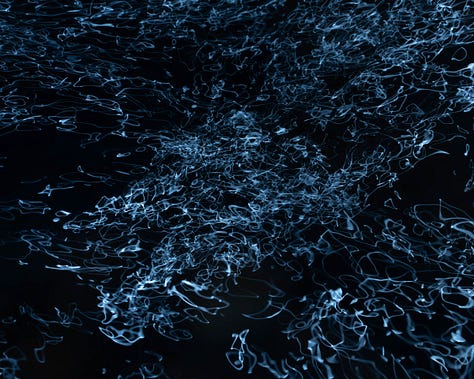
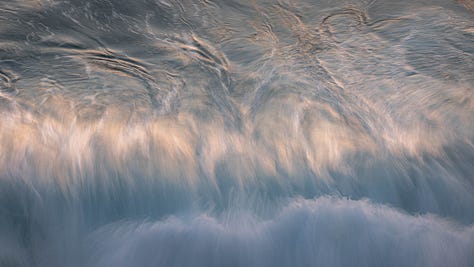

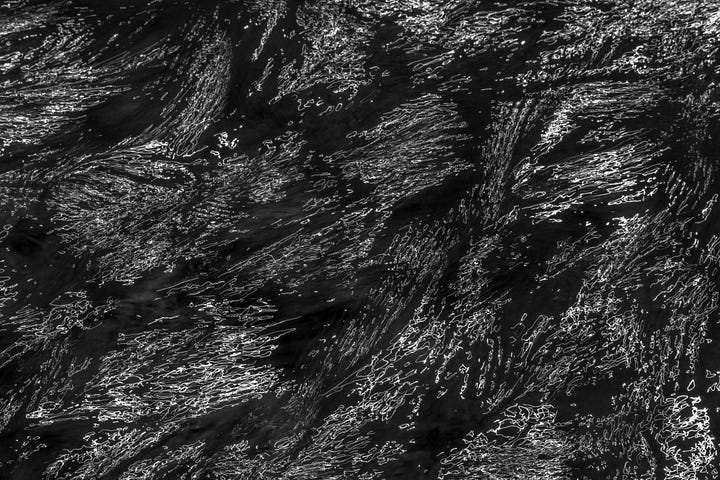






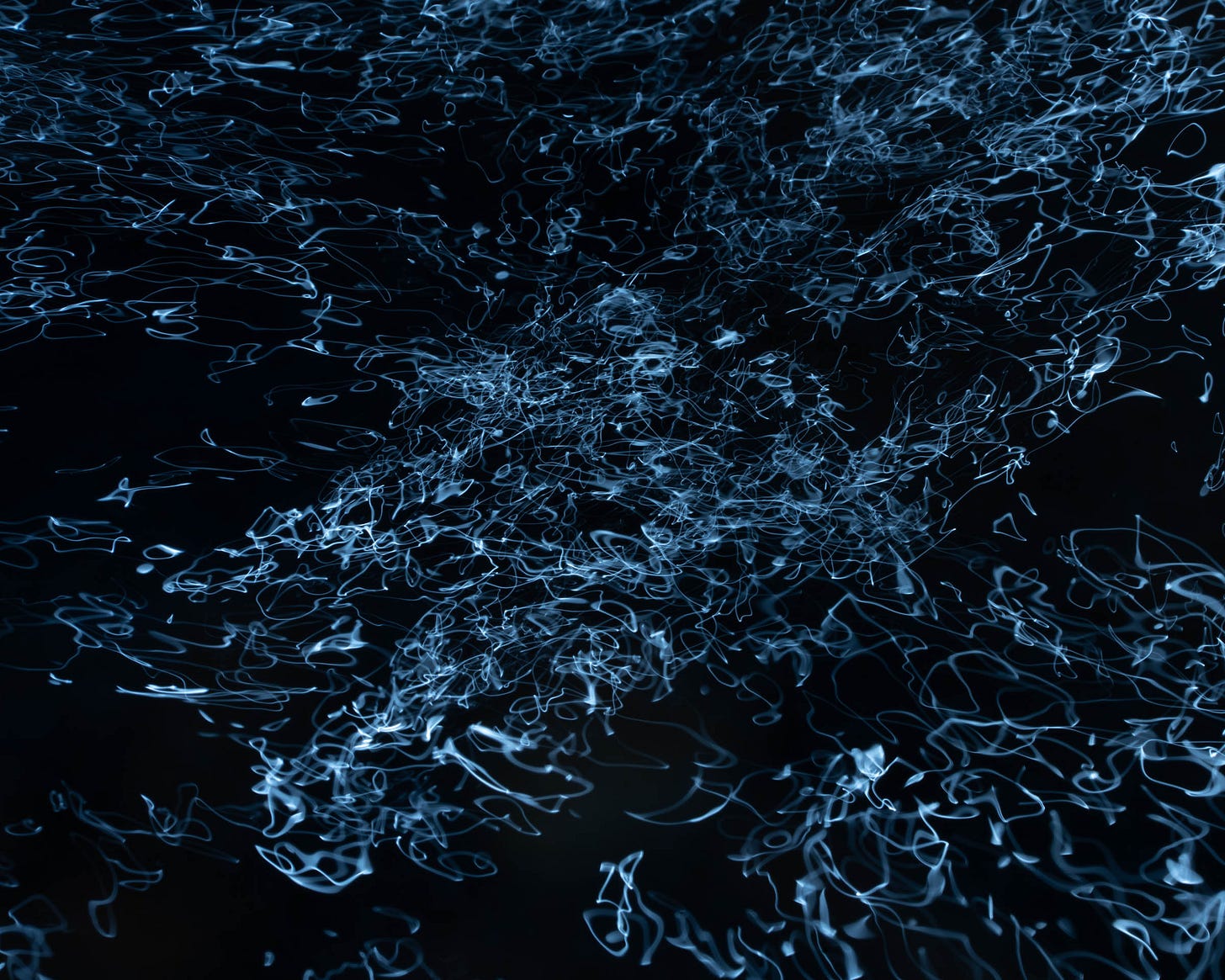
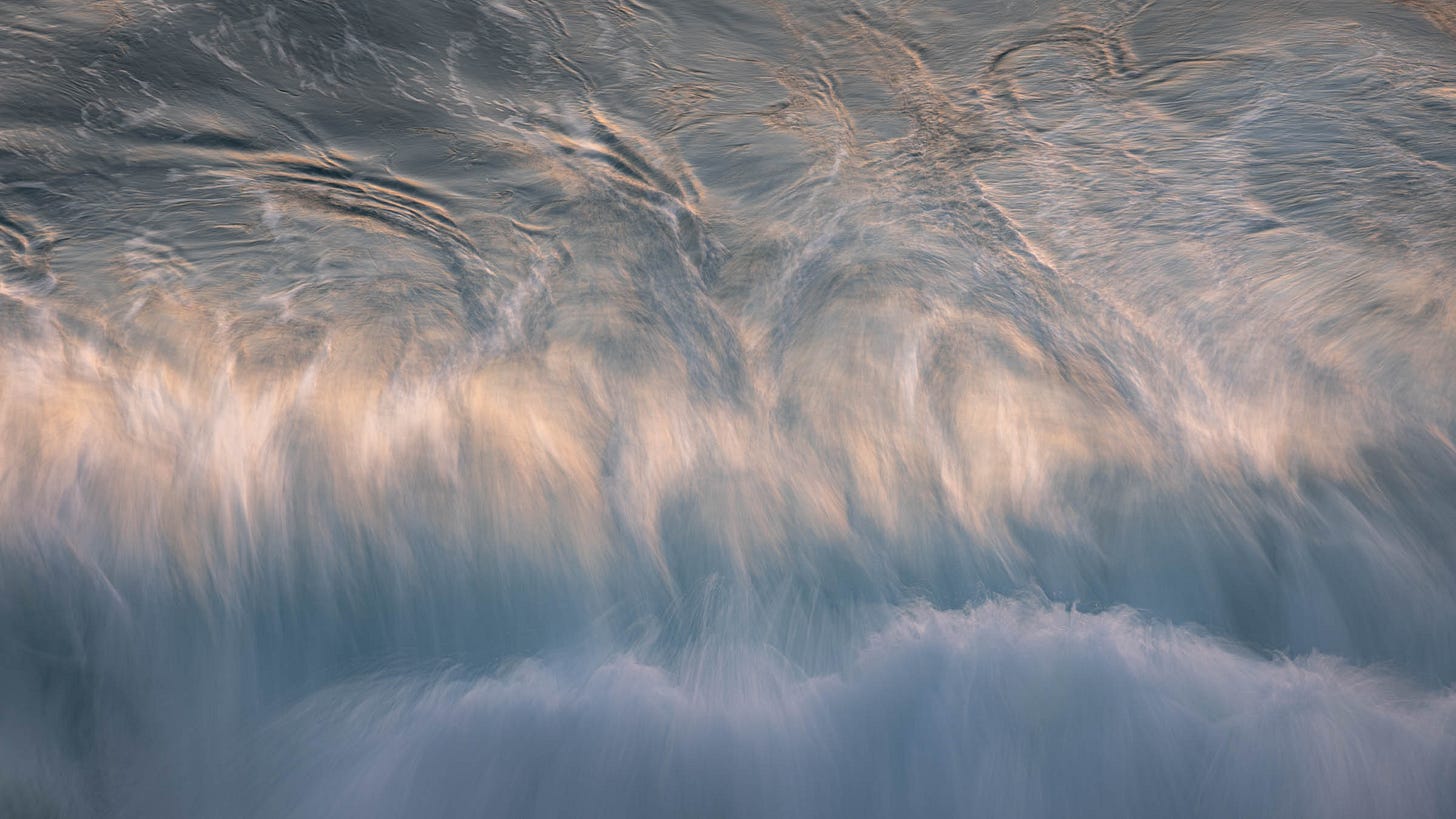

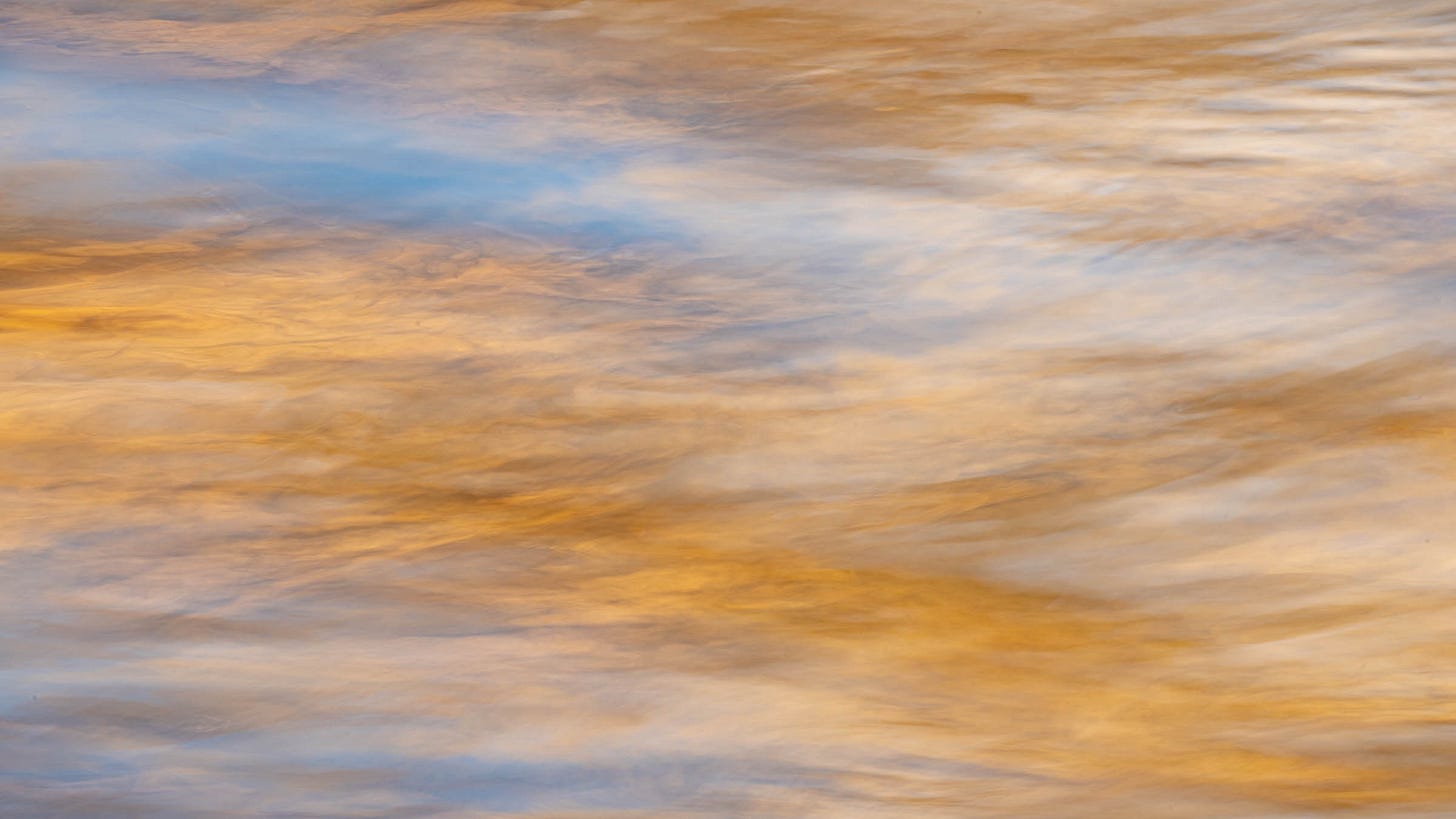
THE WAVE PICTURES ARE FANTASTIC. I LOVED THEM. AS FOR MYSTERY, MY FACING DEATH HAS BROUGHT IT CLOSE FOR ME. DARKNESS WITHOUT LIGHT MAY BE EXPERIENCED BY A SILENT PRESENCE. SOMEONE IS IN THE ROOM AND WE FEEL ITS BREATH. A BLACK FLAME, THE SOUND OF SILENCE, WE SEE HIM DARKLY AS HE IS PRESENT. HE TABERNACLES IN OUR HEART. HE IS THE LIGHT OF OUR DARK WORLD. OH GREAT MYSTERY.
Thank you, Keith. I'm so happy your post arrived in my mailbox - just as I was sending a couple of photos I took of the river Dart in Devon last year - to my family in the UK. I sent them in response to reading a beautiful prose poem by a teenaged grandchild, about sitting quietly in nature - a ritual I'm going to follow today, thanks to them.
Right now, I'm relating most strongly to the technical rituals you foreground. I'm learning to play the baroque flute. Playing a B flat in the low register requires one set of holes to be covered. The same note, blown through lips shaped to sound the higher register, requires a different set of holes to be covered. There's nature right there - the physics of air traveling through a tube! But it takes a lot of practice to make the sounds happen automagically so that music can flow, as if by nature. And of course there's a lot of ritual in making the music flow, too!
Thank you for this post. Thanks you for your photographs.
Jackie